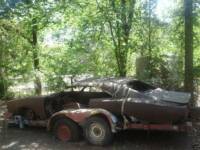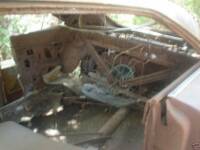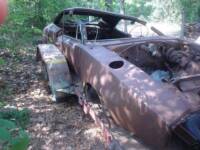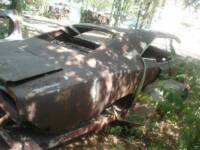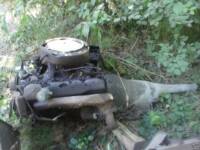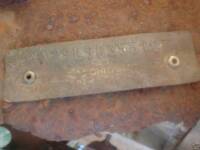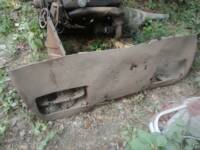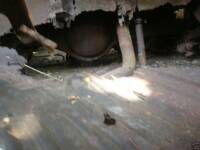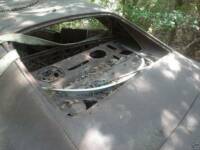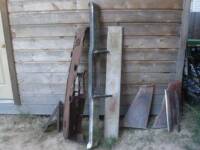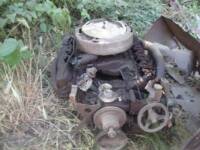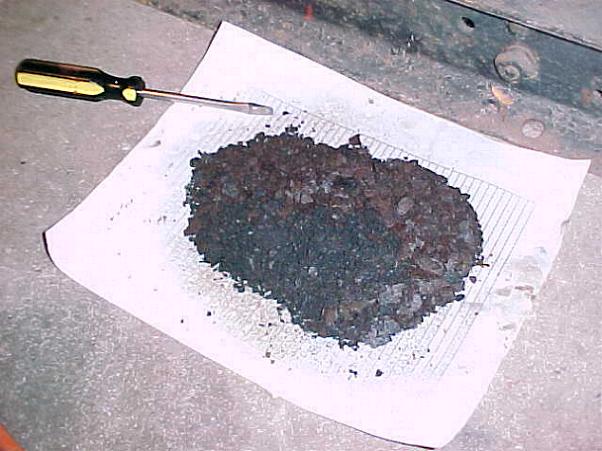
1969 Daytona Charger
440 Magnum Auto
XX29L9B355107
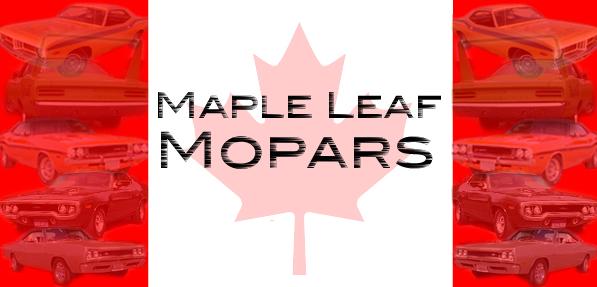
Here is July 2006's Mopar of the Month. A very rare, 1 of 503 built, 1969 Daytona Charger. For this month I have decided to tackle the whole (or at least a good chuck of it) REBODYING issue using this Daytona as an example.
Please take the time to read the whole article and let me know what you think. I have also included a web poll so you can vote and see how other Mopar guys feel about this subject. Using the pictured above Daytona I have asked a few "once around the block" Mopar fella's their views on what they would like to see happen to this Daytona.
First the definition of a Rebody-(ok I couldn't find it in the dictionary but) transferring the VIN tag of one car onto another car, therefore changing its identity. Pretty simple eh? Well read on!
Lets start with the original ad as it was found on Ebay (of course):
"You are bidding on a all original 1969 Dodge Charger Daytona. I have the original motor, transmission, disc brake rotors, and rear end of the car which are all rebuildable. I also have the rear bumper which needs rechroming. The center piece of the the tail wing is in good shape, but the two side pieces need to be repaired due to heat damage. The metal nose cone is repairable, but needs lots of work. Daytona back glass sheet metal is repairable. My intentions were to take a 1969 Dodge Charger and put all of my accessories on it. The vin number is still intact and all numbers can be easily read. The title will be transferred from the original owner to the highest bidder. This car was purchased 7-8-1970, the car was parked in 1976 and has not been moved in 30 years. If you have any questions you can call me at (903)451-3800 or email me at brianmason90@yahoo.com.
The engine and transmission numbers which are 9B355107 match the vin number which is XX29L9B355107. To answer some of the bidders question, yes the stainless steel pillars are in good shape although they do need polishing. They are not cut.
I contacted the original owner and asked her a few of the most popular questions. The exterior color was white with a red tail wing. She could not remember the interior color but we found traces of black paint on the door panels. The car had cruise control. After further inspection of the car the K frame looks beyond repair, but all disc brake parts are reusable. For those who asked the third member of the car looks like a large round ball. Feel free to contact me with any more questions."
So it appears that what we have here is a fairly well optioned (cruise control, power windows, axle package) early build Daytona which could have been white with a red stripe and black interior. Tragically sometime during the last 30 years this car was involved in a pretty good fire and then proceeded to get moved outside and left for dead. With the heat of the fire burning off all traces of paint and glass this poor thing didn't have much of a chance against the elements! As you can see from the pictures, pretty much the whole car is either rusty, or is completely missing and already returned back to the earth. So if you stumbled upon this car...now what?
As mentioned earlier here are a few different views on what should be the outcome of this once mighty fine machine! First up John Pappas of Five Star Video fame and proud owner of two Superbirds and a Daytona Charger:
Howdy folks, the diatribe you are about to read pertains to the ongoing and sometimes incendiary debate pertaining to rebodied cars. There are some radically opposing views to this dilemma that seems to be splitting the Mopar community into differing factions. I am going to present the pro-rebody side.
The laws on the books pertaining to this subject were originally written to protect folks from stolen car rings. None of these laws were ever written with the restoration of rotted, burned or otherwise wrecked old hulks from 30-40 years ago.
With our beloved Mopars commanding serious dollars in today's day and age and the supply of rare cars drying up rapidly, a lot of the cars that are remaining are the cars that were once considered to be too far gone to be restored.
There are vastly differing schools of thought as to the future of said cars....
1) Restore them by replacing every part that needs replaced.
2) Rebody the car with a clean, unrusted unibody shell.
3) Scrap the car and have it be lost forever.
Let's take a look at all three avenues.
1) Restore them by replacing every part that needs replaced. I personally wouldn't want something like this unless it was known that the work was done by the most qualified craftsmen in the field of auto body repair using only NOS Chrysler or excellent rust-free used sheetmetal. The idea of a car cobbled together in a patchwork quilt of sheetmetal by a potentially unqualified auto body technician is not an appealing one to me. Especially if some of the sheetmetal used was of the Taiwan variety.
2) Rebody the car with a clean, unrusted unibody shell. To me, this is, by far. the best option of the three. Some will scream and holler how this is"illegal" and "fraudulent". I fail to see that point in any way, shape or form. It is merely a structural repair on a larger scale. The heart and soul of
the original car is apparently in the numbers so moving the numbers from the destroyed hulk to the clean unibody shell is simply put, a repair. It takes an open mind to see this point. If you approach this with a narrow-minded "that's illegal and fraudulent" point of view, you will never get this point. When finished, you will end up with a far superior product to the aforementioned cobble job.
3) Scrap the car and have it be lost forever. The most amusing thing about this school of thought is that those who preach this school of thought are the very same folks who bemoan how expensive Mopars have become! As with everything else in the world, pricing is all relevant to the laws of supply and demand. The rarer Mopars are becoming scarcer and scarcer as time goes on. The fact of the matter is that they just aren't building Hemi cars, wing cars, multi-carb cars, etc. anymore. The more that are scrapped out, the less there are around and the prices will go even higher as the demand for these cars increases to those with the means to purchase them. I have been into Mopars since I was a kid (too long ago) and I personally don't like the idea of seeing any
rare old Mopar scrapped as long as there are clean unibody shells out there for them to be brought back to life with.
In summary, I would gladly pay more for a properly rebodied car than one that was restored by piecing it all back together. I don't expect everyone to agree with that theory but it is hardly as "immoral" or "illegal" as some would lead you to think. Thanks for taking the time to read this.
John Pappas
Thanks John! Now lets hear from Pete Christensen. Pete is probably best known for "creating" his 1970 Charger R/T Convertible. One of None!!! He used a 1968 Satellite shell for the base of making his Charger ragtop show stopper.
I thought alot about all the rebodying thats going on nowadays and I thought that I wouldn't want to see a car of that caliber disappear forever. But I also wouldn't want to see some poor SOB pay a half million dollars for it on Barrett-Jackson a year from now either! A car like this has a very high profile in the Mopar world, but a lot of the guys buying these cars are not that educated and are easily separated from their money. I thought the best way to represent a really rare car like this, without it ever being misrepresented by crooks would be to build an exact replica of the car in it's original form, without changing any VIN numbers on the donor car. I thought a restoration/replica of this car, would require a complete photo documentary of the original car in its present condition, any news clippings that could be found about the tragic fire, as well as photo documentation of the restoration of the donor car. I would rivet the original VIN tag from the Daytona right next to the fender tag of the donor car so it could not be stolen while displaying the replica. There are unscrupulous people who think the wingcar registries won't keep track of that VIN, and they can get away with rebodying the car and selling it at a huge profit, but I think doing it the way I stated is the most honest and legal way to preserve a great piece of automotive history! This is my opinion on how to save an otherwise lost Daytona and not looking like a scumbag scammer to the rest of the Mopar world in a very tight knit Mopar community!
Call the new car a "TRIBUTE CAR" enjoy it, show it, and most importantly drive it!
Thanks again!
Pete Christensen
Now on to owner of the World Famous Barrelcuda and operator of Alan Gallant Automotive Restoration
Well,,,,You really have me over a barrel now....
First off, I agree with John on this one about replacing the body shell correctly is no different then replacing a door or a fender. However a car that has had all different body panels "cobbled " together can also be done professionally with the same results in my opinion.
For me, the bottom line is the end result. Forget about the cars past, or how it got to the end result and just concentrate on the finished product. Imagine if you will, going to look at or buy a bright white Daytona with a red rump and black gut, and the car is absolutely restored 100% correct with no signs of any cobbled up patches, numbers matching drive train, VIN tag and a reproduction fender tag. That car is really no different then any other restored Daytona no matter how it got that way. If the re-body/restoration was done correctly, the collector would never be able to tell the difference. I would wager a bet that there is a lot of top dollar Hemi's and Six Packs that have had a donor shell resto.
What I don't agree with is these cars that suddenly become numbers matching. You know the ones. The car was documented as not having the engine in 2000, but now it does in 2006????
I like to think of the cars true DNA as being the Broadcast Sheet, Fender Tag, VIN tag and matching number drive train, if a car has those then ANYTHING thing else can be repaired.
These cars are too valuable and rare to just destroy the VINs and forget about them.
Peace-out...
Alan Gallant
Serge a long time member of the Moparts.com discussion board:
Looking at what's left of the 1969 Charger Daytona can't help but depress any true Mopar fan. Someone with enough time and skills and money could, however, make a new car using some of the original. What would that car be called once it is done? Hold that thought.
I recently bought a 1968 Hemi Charger. It's 98% complete and numbers matching, however, it is missing the rear window. I will use my time, money, and skills to replace that window. When I am done, will there be any controversy about it? Will anyone claim it's a "rebody?" Of course not.
Now, how about the Daytona? No matter what someone does to "bring it back to life", there will always be people claiming it's a rebody, a fraud, etc. So the question is...where do you draw the line? Or -- better -- CAN you draw a line?
I would argue that you cannot.
Say, for example, that you draw the line that in order for a car to be considered NOT a rebody, it has to retain at least 20% of its original sheetmetal. Let's say you have two cars, one with 19.98% of its original sheetmetal, and one with 20.02% of its original sheetmetal. With the line drawn firmly between the two, one is then a "restoration" and the other is a "rebody"? Makes no sense to me.
Instead of drawing a line, I feel it is better to talk of these cars -- and all cars -- in terms of how much has been replaced on the car. For example, my '68 Charger would be, say, 98% original, while the Daytona could end up being 5% original. As always, information is better than a label that is vaguely defined and hotly contested.
There are ethical and legal questions swirling around the Daytona as well. My take is this: whatever happens with the car, it should always be represented truthfully. The picture of it in its current condition should always be made available to any prospective buyer, and any car show or museum should know exactly what was done to it. Informed people can make their own decisions. Active misrepresentation is unethical. Luckily, this Daytona will be as infamous as it is famous, and the Wing Car faithful will be sure to dog it with its real history.
Legally, would cutting out the body stampings and moving the VIN and fender tags be allowed? Clearly not. However, let's not get too righteous about this. The law was intended to stop people from stealing cars and then affixing clean VINs to them - the law was NOT meant to hamstring ambitious collectors. If you want to nitpick, almost all muscle cars in California that have any engine modifications are also illegal. Just because they are exempt from smog testing does not mean that they are exempt from vehicle code regulations regarding emissions - and almost all are in violation.
So at the end of the day, if you did use only 5% of this original Daytona and rebuilt it with a donor car, what would you have? A clone? A rebody? A restoration? The only thing you can say for sure is that you have a car that has 5% of an original Daytona. Try and label it any other way and you'll start an argument that will never end.
-Serge
Scott Smith operator of Harms Auto:
Before I offer my opinions on re-bodying cars we should first discuss exactly what a re-body is; short of the act of outright removing a Vehicles VIN Identification numbers and placing them on an entirely different car, there is no commonly accepted definition for just exactly what defines a re-body.
The word “re-body” itself is a slang term that we as hobbyists have collectively used and accepted to describe some form of sheet metal replacement, there is no solid definition for this word which is likely the reason the subject will be debated forever.
IMO, when talking about vintage unibody Mopars the “heart and sole of the car is the numbers bearing basic uni-body structure as a completed unit. This is where it gets tricky…..
We all know that these unibody hulls are actually built from multiple body panels which are stamped and then spot welded together. On most cars the VIN sequence number or Vehicle Order number is stamped into 2 or 3 of these panels AFTER the unibody structure is fully assembled. To me this is where the cars real identity begins, otherwise these individual panels are just “replacement panels”. The addition of a VIN tag to this structure and the original Broadcast Sheet and fender tag that was used as the blueprint for it’s construction are the true identification to the car. If any of the non numbers bearing individual sheet metal panels are to be replaced, regardless of how many of those panels require replacement, I see no problem with that. However, when you replace an entire or partial panel containing the body stamping numbers or VIN Tag with a panel bearing numbers from another car, you have waded into the murky water of what could be construed by many as a re-body attempt. Also, some high quality restoration shops disassemble nearly every body panel at the spot welds and re-build the entire unibody structure as required to make the car as good or better than new. Have they re-bodied the car? Not IMO, they simply they took it apart, replaced bad metal, and put it back together. I see no harm in that regardless of how extensive the metal replacement, just as long as the all important numbers bearing panels end up on the original car. IMO a re-body has occurred only when all or most of the cars original unibody or pieces of the original car bearing it’s numbers have been replaced or placed onto a unibody shell from a different car. In short, it takes two cars to make a re-body. Typically the stamped in and riveted on numbers are saved from the rusted hull and spliced into the donor unibody to give the illusion that those numbers were actually part of the replacement hull from the factory after paint and body work has been done.
So, legal issues aside, what does one do if they are confronted with restoring a particularly rare car that has been almost entirely destroyed by rust, fire, or some other means? Tough question and once again, that debate will certainly rage forever. First is the ethical question, should the car be pushed into a hole, it’s numbers shredded, and considered to no longer exist? Or should a determined effort be made to revive what’s left of it and do the best job possible in restoring it to it’s former glory?
IMO there are several factors to consider, first, can the car be saved? Is there enough remaining documentation to support the cars history as being an authentic factory built car once its restoration has been completed? Does it have a good original title, VIN Tag, Fender Tag, Broadcast Sheet, original drive train, good reusable sheet metal where the body numbers are stamped, etc. to resurrect the car from the ashes without making up phony replacement documentation? Personally I’m with the “resurrection” crowd if the supportive material is available.
The next question would be financial risk in investing huge money into what would almost certainly be a “gray market car” due to the typically known extreme damage history of the car. The more significant/rare the car, the less exposure for risk, but compared to it’s identical twin with a squeaky clean history you can certainly bet that there WILL be a value difference between the two.
My bottom line is similar to the opinions I have about cloned cars. I like to see all of them saved, regardless of how bad they are. I’d like to see as many Mopars survive as possible. However, I am unyielding in my opinion that all restoration work done to any car is fully disclosed at time of sale so that all involved are fully aware of the cars history. If a car has been cloned, re-bodied, or had any other extensive restoration work done it should be represented as such. If the car is missing it’s original Documentation, it should stay that way, replacement of stamped in body numbers or paperwork such as Broadcast Sheet is 100% fraud IMO, regardless of the source or intended purpose, the only paperwork that holds one drop of water is the paperwork that left with the car when it was new.
-Scott Smith
Long time President of the Daytona/Superbird Auto Club Doug:
I could expound for hours on the subject. It is so gray right now, that it almost seems like a waste of breath. My personal opinion is that not every car deserves to be brought back from the dead. However, rebodies are going to happen whether we like it or not. The cars are now too valuable to throw away. That being said, a known rebody should bring significantly less value than a car with a documented owner history, paper trail, pre-restoration photos, and no stories. As a registry, we will make every effort to flag cars that are obvious candidates for a future rebody like the rusty yellow Daytona recently on Ebay.
-Doug Schellinger
Chris runs the 1970 Charger Registry and has this to say:
I will say that I don't like the whole VIN swap thing. I think the car should either be preserved the way it looks now, or destroyed and the VIN be retired. Now we know that's a pipe dream in this day and age. This VIN will be on another Charger eventually, a new tag will be done with some sort of story about how the original owner remembered the exact options the car came with (yeah right). It wouldn't shock me to see it in MCG restored (or whatever the term is for VIN placement on another car) in less than a year.
-Chris Germain
Lets hear from Moparts member 71sat440:
Concerning the crispy Daytona on ebay. Many people have argued why or why not this car should be brought back to life through a rebody, and I do mean brought back to life since the car ceased being a Daytona long ago. My case is that for multiple reasons this car should be laid to rest. I believe the only reason a rebody is done is for fraud and to gain money.
Lets consider the facts that
1. That when you rebody a car, you move the vin and number stamps from one car to another. This by no means saves the original car. This only saves a series of numbers stamped in metal. Make no mistake that is all it saves.
Why save what is nothing but a series of numbers unless there is money to be gained?
The would be donor car should have numbers on it, and if it doesn't a replacement vin can always be obtained through legal means.
2. In order for one car to be saved (well one cars vin) another car (donor) must disappear.
So you are not saving anything, you are only making a trade.
Why go through the hassle of cutting the numbers from one car to place on another that already has some if not for greed.
3. People that advocate rebodys will tell you it is not for greed or to defraud but it is for personal pleasure or to save a rare car.
I can not understand how it can be for personal pleasure.
Am I to believe that with 2 identical cars these people when be happier with a fake rebody, then a legitimate, legal clone because of a number stamped on it?
As far as saving a rare car, as I have stated before, you aren't saving anything, you aren't adding anything to the hobby you are just trading one cars identity for another one still has to disappear.
Another reason I can only believe greed is a factor to a rebody.
4. When rebodying a car is done or condoned it has the potential to lower the credibility of a particular make/model especially on very low number cars.
The more rebodys you learn of the more skeptical you become of ones that are legitimate.
Doubt, even if unfounded can have a negative affect on values.
When a rebody is done you shake the faith in original cars and lower their value, the only car that gains in value from a rebody is the rebody.
So why is it done? It's for the $$$$$
5. One last thought as to the values of cars in the hobby in general.
If a car is rebodied it is always done from lower cost cars to a higher cost car
(a 318 to a Hemi, a Satellite to a RR, a Charger to a Daytona)
This being the case if gone unnoticed all it does is take away from the pool of low dollar cars, affordable projects, and clean drivers and add to the higher end of mega buck cars that are unattainable for many thus making entry level cars to the hobby harder and harder to come by.
This is a double edged sword in that not only does it lower the value of legitimate cars by increasing doubt but also makes affordable cars for the not so well off pricey.
The people at the top lose, the people at the bottom lose the only person that gains is the unscrupulous person who seeks to make a quick buck through the rebody process.
There's only two reasons to be in the hobby for the love or for the money, which one are you in for?
-Doug Owens
We'll get one more opinion...if you have an Internet connect you know who JohnRR is:
AHHHH , the REBODY issue , this is about as volatile an issue as you can get with any automobile marque , and its WRONG , no ifs, ands, or buts about it . The ONLY reason to remove the VIN and body stampings from one car shell and place them on another is for PROFIT , pure and simple . Yes the person that does the rebody job CLAIMS he's doing it for personal reasons and will never sell the car in question , but in the end the car will be sold , the next buyer turned seller may NOT be as forth coming and here is where the FRAUD begins . This CROOK that forgets the car was rebodied will more than likely claim dumb if and when the truth comes out and point the finger to the person he bought it from. Now its the CROOKS word against the other and more than likely the LIAR has a better lawyer and the NICE guy that was forthcoming takes the heat . Remember NO good deed goes unpunished.
The car in question should be CRUSHED , YOU CAN NOT SAVE THEM ALL . All cars that are known rebodies should be confiscated , VINs removed and the person(s) that did the rebody fined and JAILED , a message needs to be sent to these people. Perfect example is guy in New York state that is facing up to 42 years in jail for changing VINS for PROFIT ... GREED IS NOT GOOD .
In Closing , build a clone , replica or tribute car , whatever you want to call it, and get over your insecurities over someone else saying something because a letter or 2 in the VIN isn't up to THIER scrutiny.
-JohnRR
First I'd like to thank the guys who took the time to write out their opinions!!! As you can see there are a few different ways at looking at the same pile of iron. My own opinion of this Daytona is that it is just too far gone to be restored. I don't really see anything that would be left after cleaning up all the rust that you could attach anything to. I love Daytona Chargers but this one is just too far gone...just because the VIN tag survived I don't see why a new car has to be created around it. To me there are only three possible options for this car that I could live with:
1. Put all nose cone and wing back on the car along with the engine and tranny. Make a roller out of it so it can be moved fairly easily and display it as is. Make up a few signs and haul it to a few shows. I am sure the car would steal the show away from all the other Wing Cars and would be a hot topic of discussion! If you had the proper space you could also display it at home, I am sure most everyone would ask about it first no matter what company it keep. Again it would be a great discussion starter.
2. Part it out, hopefully a few of the remaining parts could end up another Daytona with missing or damaged parts. Once all the salvageable parts or taken off, crush the poor thing and put it out of its misery. This would be by far the hardest option to follow, especially when the bidding didn't stop until the car until it reach the ridiculous sum of $40,600 USD!!! Click here to see the link to the auction. I could honestly say that if I owned that car and somebody offered me $40k for it I'd be getting out my dust broom to make sure the guy got the whole car lol. I know this sounds bad but I guess everyone has his price, I would take the cash and wash my hands...
3. I really like Pete's idea of building a tribute car. Find a clean 1969 Charger and build yourself a very cool Daytona clone, this car could keep the history of the old car alive while not messing with VIN issues. You will still be able to have a great discussion starter, while still enjoying a cool ride! The original Daytona would be dead but its story would continue.
To me taking the VIN of the car and riveting on to another shell is just wrong no matter what the car is. Not every car needs to be "saved" The donor car already has a VIN assigned to it by Chrysler . That is its identity. I do not see why people think its ok to take that away. To me each car has its own soul, its own history and character that should be left intact.
The end result with a rebodied car is to present a car that is just something that it is not. By moving the VIN tag you are faking its history and misrepresentating the car itself. The reason people do the VIN switch is because they don't want to give up the chance on hitting a home run by leaving $$$ on the table. I don't know about you but I want my car built by Chrysler, not Joe, Dick or Harry.
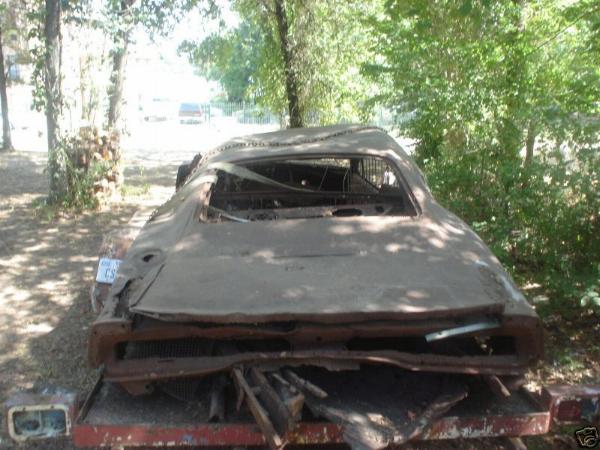
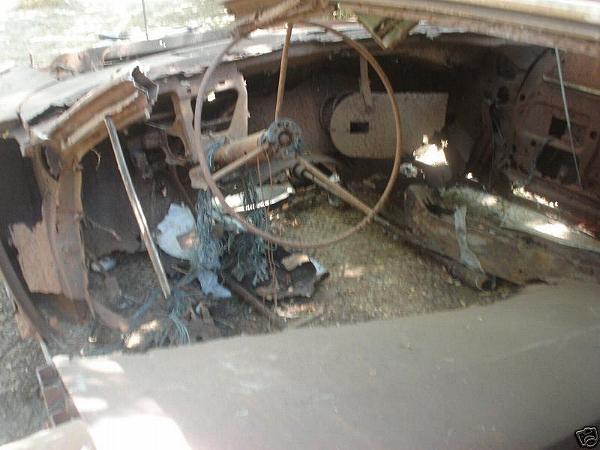
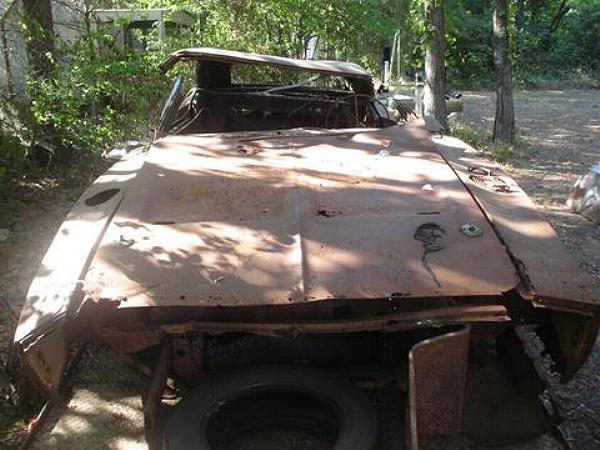
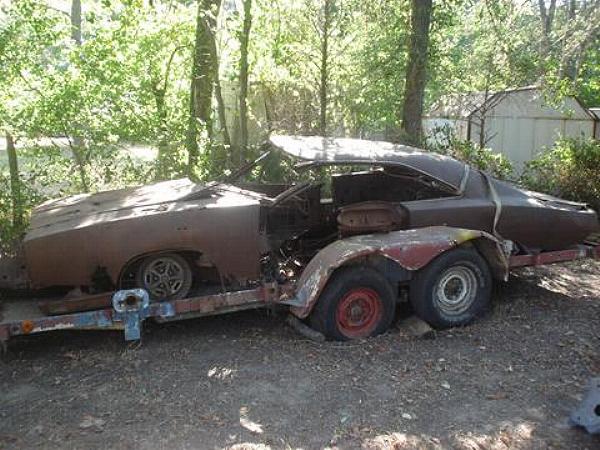
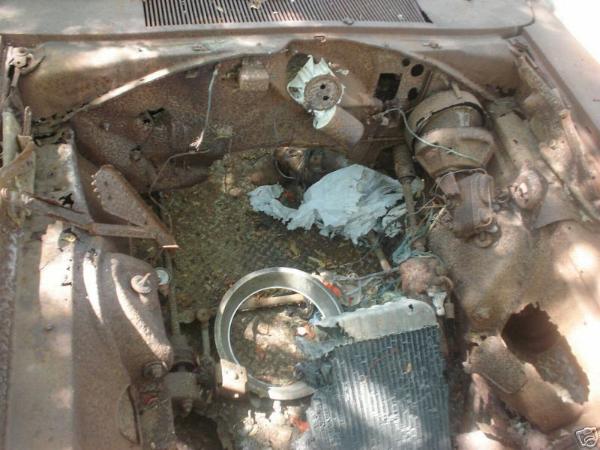
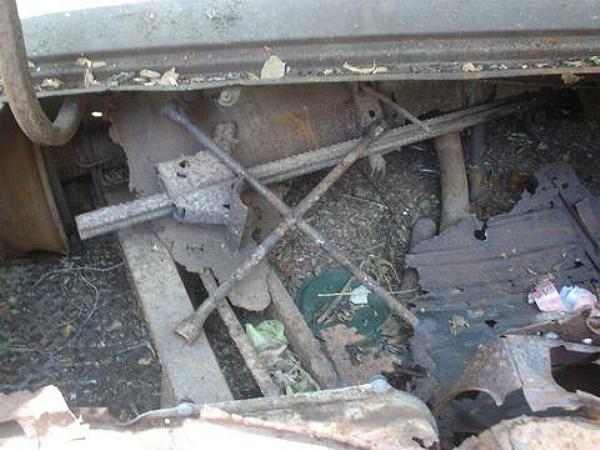
What next, find a pile of rust behind a barn where the owner once owned a Hemicuda, send away for a title, get a VIN tag made, get yourself a repop fender tag, broadcast sheet, door sticker, and window sticker. Find yourself a drivetrain, think to yourself how you always wanted a numbers matching car...hey why not restamp the block/tranny too!!! Assemble your creation, tell people you found it in the possession of an old farmer....get yourself a magazine feature and wait to $$$ in....
Where does it end???
I know that is a very extreme example, but a VIN tag is not a reason to make up a car either...
Members of the Maple Leaf Mopars "Hot Stove Lounge":
-Scott Smith
-John Pappas
-Chris Germain
-Doug Schellinger
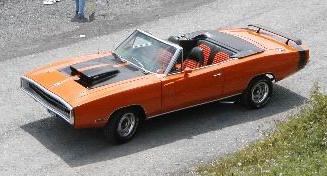
-Pete Christensen
-Alan Gallant
-Serge "CalSixPack" on Moparts

-Dave Carson
-JohnRR
-Doug "71sat440" on Moparts
Mopar of the Month
November 2014
Mopar of the Month
July 2006
Mopar of the Month
November 2014
Mopar of the Month
July 2006
